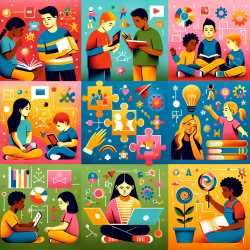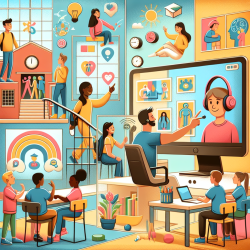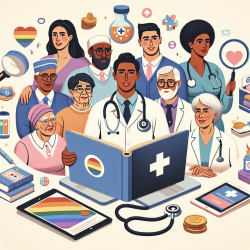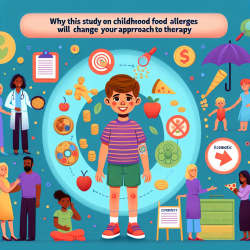Introduction
As a speech-language pathologist dedicated to fostering the best outcomes for children, it's crucial to explore innovative strategies that can enhance our practice. The recent research article titled "Information synergy maximizes the growth rate of heterogeneous groups" provides valuable insights that can be applied to our work with children in educational settings. This blog will delve into how the principles of information synergy can be harnessed to improve therapy outcomes and encourage further research in this area.
Understanding Information Synergy
The concept of information synergy revolves around the idea that diverse groups can achieve better outcomes by pooling their unique knowledge and skills. This is particularly relevant in speech-language pathology, where collaboration between therapists, educators, and families can lead to more comprehensive and effective interventions for children.
Applying Information Synergy in Practice
Here are some practical ways to implement information synergy in your work with children:
- Collaborative Goal Setting: Engage families, teachers, and other professionals in setting therapy goals. Each stakeholder brings unique insights that can inform a more holistic approach to intervention.
- Interdisciplinary Teams: Form teams that include professionals from various disciplines, such as occupational therapists, psychologists, and educators, to address the multifaceted needs of children.
- Data Sharing: Utilize shared platforms for tracking progress and outcomes. This allows for real-time adjustments to therapy plans based on collective data insights.
- Continuous Learning: Encourage ongoing professional development and knowledge sharing among team members to keep abreast of the latest research and techniques.
The Impact of Information Synergy on Child Outcomes
By maximizing information synergy, we can enhance the growth rate of resources available to children, leading to improved educational and developmental outcomes. The research highlights that groups with a greater diversity of signals can maximize their collective information, which is directly applicable to the diverse needs of children in therapy settings.
Encouraging Further Research
The principles outlined in the research provide a foundation for further exploration into how information synergy can be optimized in educational and therapeutic contexts. Practitioners are encouraged to conduct their own studies and share findings with the broader community to continually refine and improve practices.
To read the original research paper, please follow this link: Information synergy maximizes the growth rate of heterogeneous groups.
Conclusion
Incorporating information synergy into speech-language pathology practices can lead to more effective interventions and better outcomes for children. By embracing collaboration and continuous learning, practitioners can create environments where children thrive. Let's continue to explore and implement these strategies to ensure every child reaches their full potential.










